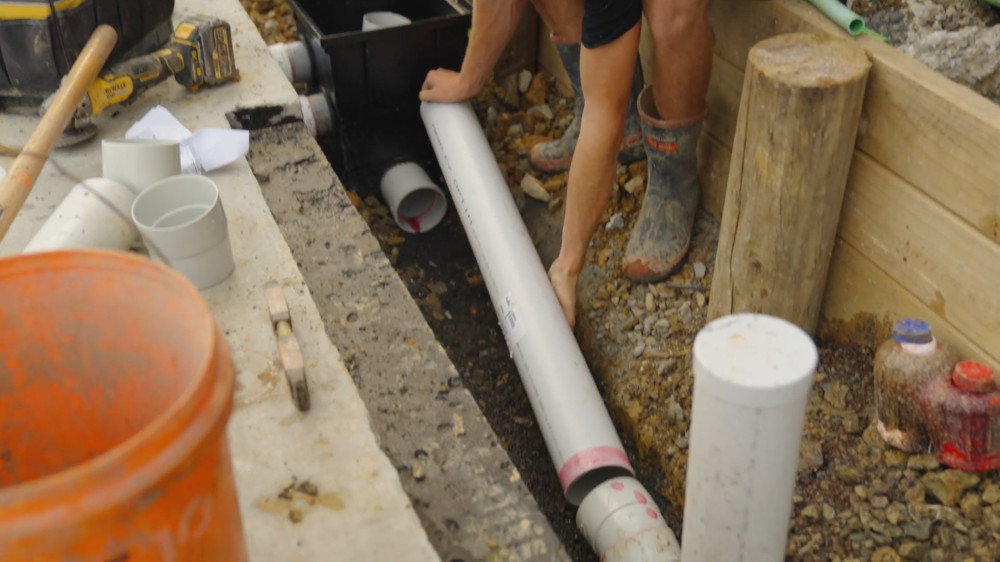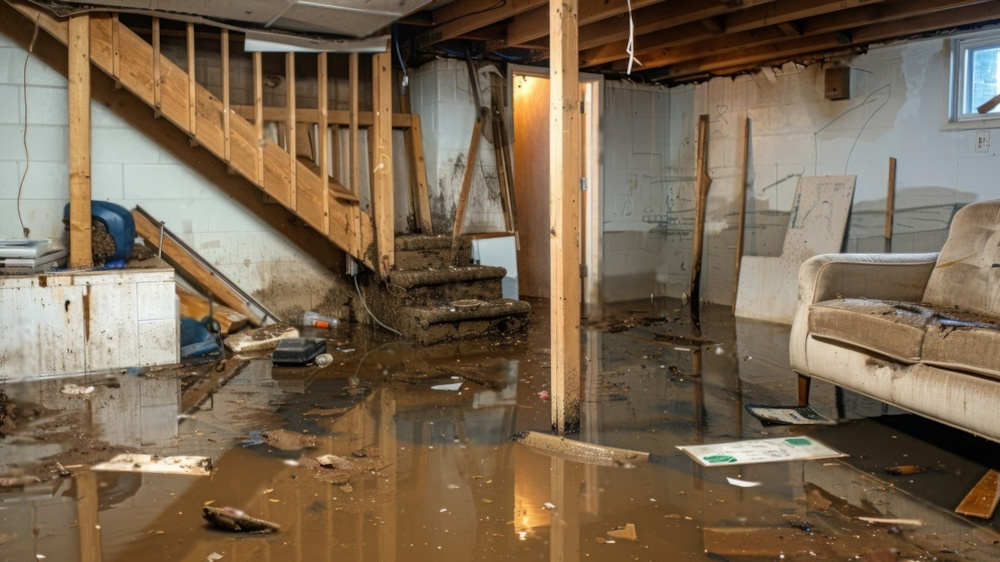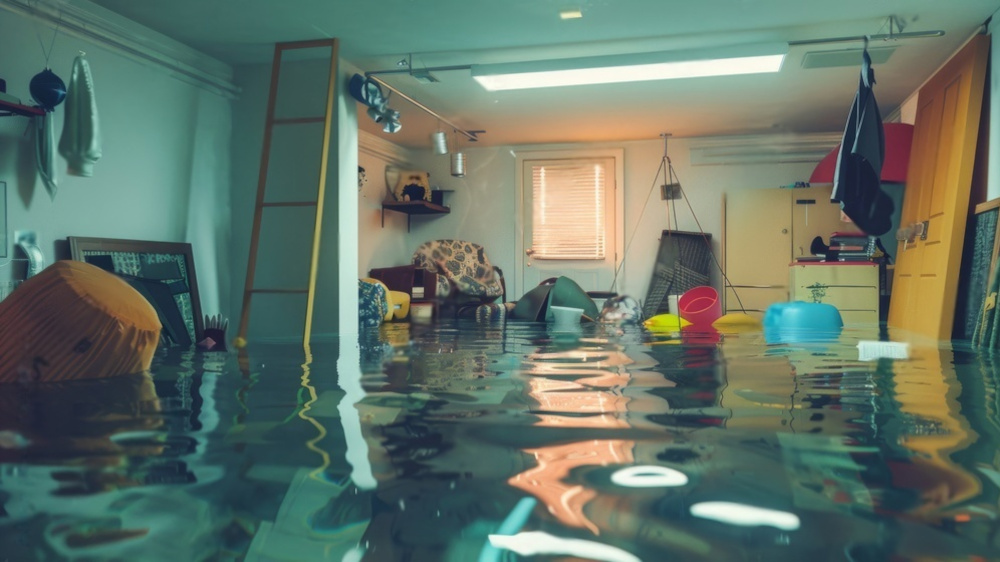Maintaining a well-functioning drainage system is essential for any homeowner, especially in a country like New Zealand, where heavy rains and storms are common. Properly maintained drainage systems can prevent costly repairs, minimize water damage, and improve your home’s overall safety and appearance. Here’s a comprehensive guide to help you keep your drainage system in top shape and ready to handle New Zealand’s unpredictable weather.
1. Understand Your Drainage System’s Components
Before diving into maintenance tips, it’s helpful to know the basic components of your home drainage system. In most New Zealand homes, drainage systems typically include:
- Gutters and downspouts: Direct rainwater off your roof and away from the foundation.
- Surface drainage: Channels that help direct surface water away from areas like driveways, patios, and gardens.
- Subsurface drainage: Pipes that manage groundwater and prevent water buildup.
- French drains: Gravel-filled trenches that help direct groundwater away.
- Sump pumps: Often installed in basements to remove accumulated water.
Each of these components requires its own set of maintenance practices to stay effective, and each plays a crucial role in safeguarding your property.
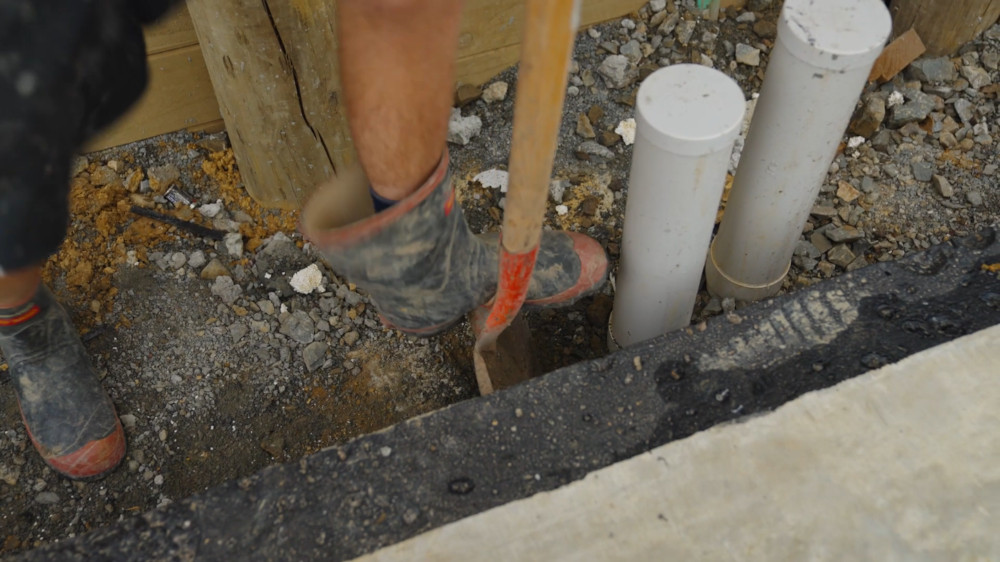
2. Regularly Inspect and Clean Your Gutters
Your gutters and downspouts are often the first line of defense against water buildup. Clogged gutters can cause water to overflow, leading to foundation erosion, basement flooding, and other water-related issues.
- Clear debris: Regularly remove leaves, twigs, and other debris that collect in your gutters, especially in autumn when foliage is most abundant.
- Flush gutters: Use a hose to flush out any residual debris, ensuring that water flows freely through the system.
- Secure loose gutters: Check for any loose brackets or sagging sections and make necessary repairs to keep everything securely attached.
Tip: Clean your gutters twice a year—once in autumn and once in spring—to ensure they remain free from blockages year-round.
3. Check Drainage Pipes for Blockages
Drainage pipes that run underground are essential for preventing water from pooling around your property. However, these pipes can sometimes become blocked, leading to water backup and potential property damage.
- Watch for signs of blockage: Slow drainage or standing water near drainage outlets may indicate a blocked pipe.
- Inspect periodically: Use a flashlight to check for visible debris around the inlet and outlet points.
- Use a plumbing snake or jetting service: For minor clogs, a plumbing snake can often dislodge debris, but for persistent blockages, consider calling professionals like Real Drainlayers for high-pressure water jetting.
4. Examine and Maintain Surface Drains
Surface drains help direct excess water away from driveways, patios, and other hardscaped areas. Without regular maintenance, they can become clogged and lead to water pooling.
- Clear grates and remove debris: Regularly remove dirt, leaves, and debris from surface drains to keep water flowing freely.
- Ensure proper grading: If water pools in areas near your drains, it may be a sign that the ground isn’t properly sloped. Consult a professional to adjust grading where necessary.
- Use a vinegar solution: Pouring a vinegar solution down surface drains can help break down minor blockages and prevent buildup.
Tip: Aim to inspect and clean surface drains every three months to avoid buildup, particularly after heavy storms or seasonal changes.
5. Maintain French Drains and Gravel Trenches
French drains are common in New Zealand homes, especially those on sloped or hillside properties. These drains require specific maintenance to keep them effective.
- Replace gravel periodically: Over time, gravel in a French drain can become compacted, reducing its ability to filter water effectively.
- Keep the area clear: Avoid planting trees or shrubs with aggressive roots near French drains, as roots can infiltrate and block the drainage system.
- Flush the system annually: Run water through the system to ensure it’s working correctly and clear out any minor clogs.
6. Ensure Sump Pumps Are Functioning Properly
If you have a sump pump installed in your basement, regular maintenance is crucial, as it helps prevent water from accumulating in low-lying areas of your property.
- Test the pump regularly: Pour a bucket of water into the sump pit to ensure the pump activates and drains the water efficiently.
- Check the power supply: Ensure your sump pump is connected to a reliable power source and, ideally, to a backup power option.
- Clean the pit: Periodically clean the sump pit to remove silt, debris, and any buildup that might obstruct the pump.
Tip: Test your sump pump at least once every three months, and always before an anticipated storm season.
7. Look for Signs of Erosion or Soil Displacement
Erosion can be a major issue in New Zealand, especially in properties located near slopes or coastal areas. A well-maintained drainage system can help prevent erosion, but periodic checks are essential.
- Inspect slopes: If you notice soil moving or eroding near sloped areas, it could indicate poor drainage.
- Check retaining walls: If you have retaining walls, make sure water isn’t collecting near the base, which can lead to erosion and structural issues.
- Add vegetation: Planting ground cover can help stabilize soil and reduce erosion on slopes, providing an added layer of protection.
8. Schedule Annual CCTV Drain Surveys
For a comprehensive check-up on your drainage system, consider having a CCTV drain survey done once a year. This advanced inspection can detect potential issues like cracks, blockages, and pipe misalignments that may not be visible through regular maintenance.
- Pinpoint issues early: A CCTV survey can identify cracks, roots, and other potential blockages before they escalate.
- Save on repair costs: By identifying minor issues early, you can avoid costly repairs later on.
- Get professional advice: Real Drainlayers offers expert advice following a CCTV survey, helping you understand any issues and their potential solutions.
9. Prevent Root Intrusion
Tree roots are one of the most common causes of blocked and damaged drainage systems. As they grow, roots naturally seek out moisture, which can lead them into your pipes.
- Plant carefully: Avoid planting trees and shrubs with invasive root systems near your drainage pipes.
- Use root barriers: Installing root barriers between trees and pipes can help prevent roots from infiltrating your drainage system.
- Trim nearby trees: Regularly trimming trees and shrubs around your drainage area reduces the risk of roots seeking out your pipes.
Tip: If you suspect root intrusion, reach out to a professional for a CCTV survey to assess and address the problem before it escalates.
10. Seek Professional Maintenance When Needed
While some maintenance tasks can be handled by homeowners, certain aspects of drainage maintenance are best left to professionals.
- Periodic jetting: High-pressure water jetting helps clear out stubborn debris, grease, and even minor root intrusion.
- Expert inspections: Professionals can detect early signs of damage that might not be visible to the untrained eye.
- Tailored solutions: Real Drainlayers offers expert drainage solutions tailored to the specific needs of New Zealand properties, ensuring your system stays effective and durable.
Final Thoughts
Keeping your drainage system well-maintained is essential for protecting your property and preventing costly repairs. By performing regular inspections, clearing blockages, and addressing any drainage issues as they arise, you can ensure your system functions efficiently year-round. Implementing these maintenance practices will not only help extend the lifespan of your drainage system but also give you peace of mind during New Zealand’s rainy seasons.
If you’re unsure about your drainage system’s condition or need professional assistance, Real Drainlayers is here to help. We offer a full range of drainage services, from CCTV surveys to high-pressure jetting and repair work. Contact us today to schedule a consultation and keep your property safe from water damage all year long. Let us handle the details, so you can enjoy a worry-free home.
Basement flooding is a common concern for homeowners, particularly in areas prone to heavy rainfall or rapid snowmelt. In New Zealand, where the weather can vary significantly between regions, having an effective drainage system is crucial to protect your property from the damaging effects of water intrusion. Whether you live in a coastal area with frequent storms, a region with heavy rainfall, or even in areas with high water tables, understanding the importance of proper drainage can save you from expensive repairs and the potential loss of valuable property.
In this comprehensive guide, we will discuss why basement flooding happens, how an effective drainage system can help prevent it, and what steps homeowners can take to ensure their property remains dry and protected. We’ll also look at the different drainage solutions available and provide practical advice tailored to New Zealand homeowners.
Understanding Basement Flooding
Basement flooding occurs when water seeps into your home’s basement or crawl space. This can happen due to a variety of reasons, such as excessive rainfall, poor drainage, or underground plumbing issues. Basement flooding can lead to extensive damage, including:
- Structural damage to the foundation
- Growth of mold and mildew
- Decreased air quality
- Loss of personal belongings stored in the basement
- Higher repair costs for walls, flooring, and insulation
Common Causes of Basement Flooding
- Poor Drainage Systems
A lack of adequate drainage around the foundation of your home is one of the most common causes of basement flooding. If your yard slopes toward your foundation or if the drainage system is not functioning properly, water will accumulate and seep into your basement. - Heavy Rainfall
New Zealand experiences a wide range of weather patterns, including heavy rainfall, particularly in areas like Auckland, Wellington, and the West Coast. Intense storms can overwhelm the drainage systems, leading to flooding. - Clogged Gutters and Downspouts
Gutters that are clogged with leaves, twigs, and debris prevent rainwater from flowing away from your home’s foundation. If gutters are not properly maintained, water can overflow and seep into the basement. - Foundation Cracks
Cracks in the foundation walls can allow water to enter the basement, especially during periods of heavy rainfall. Over time, these cracks can worsen and result in more significant flooding issues. - Water Table Issues
In some areas of New Zealand, particularly those near coastal regions or low-lying land, the water table may be high. This increases the likelihood of groundwater seeping into the basement, especially after periods of prolonged rainfall.
How Effective Drainage Systems Prevent Basement Flooding
An effective drainage system is essential to keep water away from your basement and prevent flooding. Here are several ways proper drainage can protect your home:
- Redirecting Water Away from the Foundation
Proper drainage systems, such as French drains, surface drains, and sump pumps, are designed to redirect water away from the foundation of your home. By guiding water to a safe drainage area, these systems ensure that your basement remains dry. - Preventing Water from Pooling Around the Foundation
If water pools around the foundation of your home, it can eventually seep into the basement. Installing surface drains or gutters that direct water away from the house ensures that this doesn’t happen. - Removing Excess Water
A well-maintained drainage system can help remove excess water from your property, preventing water accumulation that could lead to flooding. This is particularly important during heavy rainstorms when the volume of water is high. - Improved Air Circulation
Installing a well-functioning drainage system also helps with ventilation. Moisture buildup in the basement is a major contributor to mold and mildew growth. By reducing water around the foundation, you’ll prevent excessive moisture in the air, helping to keep the basement dry and healthy.
Types of Drainage Systems for Preventing Basement Flooding
There are various drainage solutions available to prevent basement flooding. The right system for your home will depend on your property's unique requirements, such as location, soil type, and the size of your basement. Below are some of the most effective options:
1. French Drains
A French drain is a trench filled with gravel or rock that contains a perforated pipe designed to redirect water away from the foundation. These systems are typically installed along the perimeter of the home or beneath the basement floor. French drains are highly effective at preventing basement flooding by draining excess water from the surrounding soil.
Benefits:
- Highly effective in areas with a high water table.
- Prevents water from pooling near the foundation.
- Low maintenance and long-lasting.
2. Sump Pumps
A sump pump is an electric pump installed in a sump pit in your basement. The pump removes water that has accumulated in the pit and discharges it outside the home. Sump pumps are particularly effective for homes in flood-prone areas where excess water needs to be removed quickly.
Benefits:
- Removes water quickly and efficiently.
- Can be used in conjunction with other drainage systems.
- Reduces the risk of groundwater flooding.
3. Surface Drains
Surface drains, or channel drains, are placed along the surface of your property to collect and direct water away from the foundation. These drains are typically installed along driveways, patios, and other areas where water tends to collect.
Benefits:
- Easy to install and maintain.
- Prevents water from pooling around the foundation.
- Effective in managing stormwater runoff.
4. Gutters and Downspouts
Maintaining gutters and downspouts is a simple yet essential part of any drainage system. Gutters catch rainwater that falls on your roof, while downspouts direct it away from your home’s foundation. Clogged gutters can cause water to overflow and flood the basement, so regular cleaning and maintenance are crucial.
Benefits:
- Easy to maintain.
- Prevents water from flowing directly toward the foundation.
- Reduces the likelihood of basement flooding caused by heavy rain.
5. Perimeter Drains
Perimeter drains are installed around the foundation of your home, either inside or outside the basement walls. These drains capture and divert water before it can seep into the basement. Perimeter drains are an excellent option if you live in an area with significant rainfall or a high water table.
Benefits:
- Highly effective at preventing water intrusion.
- Can be combined with sump pumps for optimal results.
- Ideal for homes located in flood-prone areas.
Maintenance Tips for Keeping Your Drainage System Effective
Once you’ve installed a drainage system, proper maintenance is key to ensuring it remains effective. Here are some essential maintenance tips:
- Clean Gutters Regularly
Make sure gutters are cleaned at least twice a year, particularly before the rainy season. This will help prevent water from overflowing and pooling around your foundation. - Inspect Sump Pumps
Test your sump pump periodically to ensure it’s working properly. Clean the pump and check the discharge pipe for blockages. - Maintain French Drains
Inspect French drains for blockages or damage. Over time, the gravel may become compacted, which can reduce the efficiency of the drain. If necessary, remove and replace the gravel to maintain the flow of water. - Check for Cracks in the Foundation
Regularly inspect your foundation for cracks that could allow water to enter. Seal any small cracks immediately to prevent further damage.
Conclusion
Basement flooding can be a serious problem for homeowners in New Zealand, but it’s preventable with the right drainage system. Whether you choose to install French drains, surface drains, sump pumps, or gutters, it’s essential to ensure your property is equipped with an effective drainage system to protect your basement from water damage. By taking proactive steps to maintain your drainage system, you’ll ensure that your home stays dry and your investment remains protected for years to come.
If you're concerned about basement flooding or want to install a drainage system that suits your property’s needs, Real Drainlayers can help. Contact us today for professional advice and installation services to protect your home from basement flooding.
If you've ever been in a situation where you needed to dig, whether for construction, renovation, or any other ground-based project, you've probably been introduced to the concept of excavation. But have you ever heard of Hydrovac Excavation? If not, then sit back, grab a cuppa, and let's get to know this modern, efficient, and safe excavation method. This article is for anyone keen to learn about new technologies or who might need excavation services, especially for tasks like drain unblocking.
Hydrovac excavation is a non-destructive method that uses pressurized water and an industrial-strength vacuum to quickly and safely expose underground infrastructure. It's an approach that's increasingly being adopted across New Zealand and globally, for its efficiency, accuracy, and reduced risk to both workers and existing infrastructure. It's particularly beneficial to those in the construction, utility, and even drain unblocking industries. Understanding how it works and when it's needed can not only save you time and money, but also contribute to safer working conditions. So, let's dive a bit deeper into this fascinating technique.
How Does Hydrovac Excavation Work?
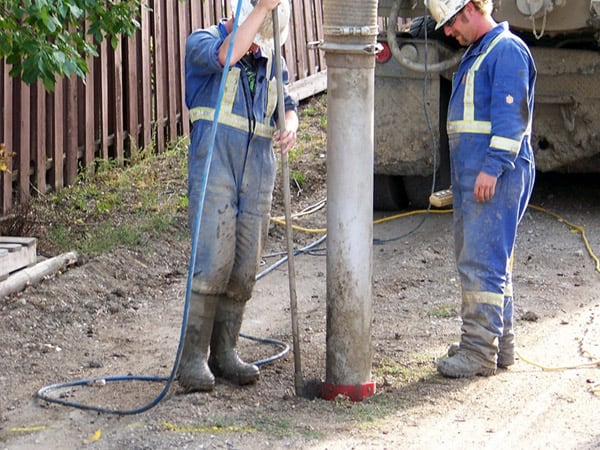
Hydrovac excavation, as you might guess from the name, combines water and vacuum technology to provide a safe and efficient method of excavation. It's a bit like giving the earth a bit of a wash and vac, but on a much larger scale and with a whole lot more precision.
The process starts with the hydrovac truck shooting a high-pressure stream of water into the area that needs to be excavated. This water, under pressure, cuts through the soil and breaks it up. The soil becomes a slurry, which is a mixture of water and soil that's much easier to remove than solid earth. The real magic happens with the vacuum system. Attached to the truck is a large hose that suctions up the slurry, removing it from the excavation site. The slurry is then stored in the truck's debris tank, keeping the worksite clean and tidy.
The beauty of hydrovac excavation lies in its precision. Traditional excavation methods run the risk of damaging existing infrastructure, like gas lines, water pipes, and telecommunications wires. However, the use of water makes hydrovac excavation much more delicate and controlled. The water can't damage these utilities like a metal digger or shovel might. This precision not only saves time and money on potential repairs but also promotes safer working conditions. Whether you're working on a large construction project or unblocking drains, hydrovac excavation offers a compelling alternative to traditional digging methods.
When Would I Need Hydrovac Excavation?
Hydrovac excavation is a versatile technique and can be used in a wide variety of scenarios. One of the most common applications is for locating and exposing existing utilities. As mentioned before, the precision of hydrovac excavation makes it ideal for safely unearthing buried pipes and cables without causing damage. This process is known as 'daylighting' or 'potholing' and can save a heap of trouble when compared to more traditional digging methods.
You'd also need hydrovac excavation when you're up against tough or frozen ground. The high-pressure water does a top-notch job of breaking up hard soil and even ice, making it possible to excavate areas that would be challenging with other methods. It's also used for digging in areas that are hard to reach with traditional excavation equipment, like tight spaces or areas that are obstructed by buildings or other structures.
Then, there's drain unblocking. Over time, drains can become clogged with debris, and traditional methods of unblocking can be time-consuming and potentially damaging to the pipes. Hydrovac excavation, with its high-pressure water, can cut through and remove the blockage without damaging the drain infrastructure. It's a quick and efficient way to keep the drains flowing smoothly.
In short, if you need precise, efficient, and safe excavation, hydrovac is the way to go. From construction and utility maintenance to drain unblocking, it's a method that's proving to be a game-changer in the excavation industry.
What Are The Disadvantages of Hydrovac Excavation?
Like any technique, hydrovac excavation isn't without its drawbacks. One of the main disadvantages is that it can require a significant amount of water, which may not be ideal in areas where water conservation is a concern. Plus, the water used in the excavation process must be disposed of properly to prevent pollution, adding an extra layer of environmental consideration.
Weather can also affect hydro excavation. While it's true that hydrovac is great for dealing with frozen ground, the system itself can be affected by extreme cold. The water can freeze in the hoses and tanks, making the equipment difficult to operate. In areas with harsh winters, this could limit the times of the year when hydrovac excavation can be used effectively.
Cost can be another disadvantage. While hydro excavation can save money in the long run by preventing utility strikes and offering faster excavation, the upfront costs can be higher than traditional digging methods. The specialised equipment and trained operators needed for hydrovac excavation can be more expensive than hiring a standard backhoe and operator.
Lastly, the disposal of the soil and water mixture can be challenging. Unlike dry soil excavated by traditional methods, the slurry created by hydrovac excavation can't be easily used for backfill. It often needs to be transported off-site for disposal, which can increase project costs and time.
Essentually, while hydrovac excavation offers many benefits, it's important to weigh these against the potential disadvantages for your specific project and location.
What Happens During Hydro Excavations?
During a hydro excavation process, a series of steps are methodically followed to ensure safety and efficiency. It all begins with the hydrovac truck arriving on site. This specialised vehicle is equipped with a storage tank for holding water, a heater to warm the water if necessary, a vacuum tank for storing the excavated material, and a high-pressure hose and vacuum hose system.
The first step in the process is identifying and marking the excavation area. This is crucial for safety reasons and to prevent any damage to underground utilities. Once the area is marked, the operator begins the excavation process.
The hydro excavation process itself involves the use of high-pressure water to break up the soil. The operator directs the water jet towards the ground, and as the water pressure dislodges the soil, it creates a slurry of water and soil.
Simultaneously, a powerful vacuum is used to suck up this slurry, transferring it into a holding tank on the hydrovac truck. This process continues until the desired depth of excavation is achieved.
Throughout the process, the operator has precise control over the excavation, reducing the risk of damage to utilities and structures. Because the soil is being stored in a tank, it also reduces the mess on the excavation site.
After the excavation, the slurry is typically taken to a disposal site. However, it's important to note that in some cases, the slurry may be treated and used for other purposes, such as landfill cover or road construction.
In summary, hydro excavation is a careful, controlled process that involves high-pressure water to break up the soil and a vacuum to remove the resulting slurry, ensuring a clean and safe excavation.
Applications of Hydro Excavation
Hydro excavation is a versatile technique that can be used in a wide range of applications in the construction and utility industries. One of its most common applications is in the safe exposure of underground utilities. By using water to break up the soil, the risk of damaging pipes, cables, or other utilities is significantly reduced compared to traditional digging methods.
There are several scenarios in which hydro excavation can come in handy. Here are a few of the applications of Hydro Excavation:
- Exposure of Underground Utilities: Hydro excavation is frequently utilised for safely revealing underground utilities. Its method of using water to break up soil considerably reduces the risk of damaging pipes, cables or other utilities, making it a preferred choice over conventional digging methods.
- Slot Trenching: In scenarios where narrow trenches are required for the installation of pipes, cables, or other utilities, hydro excavation proves to be incredibly beneficial. The precision of this technique allows trenches to be dug to exact specifications, resulting in minimal disruption to the surrounding area.
- Piling Hole Excavation: Hydro excavation is employed in the construction of buildings, bridges, and other structures where piles are part of the foundation. This method can be used to dig the holes for these piles, ensuring accurate placement and appropriate depth.
- Debris Removal: The hydro excavation technique is also used for debris removal. Its precision and control over the excavation area make it an ideal choice for removing debris without causing any damage to the surrounding structures or utilities.
- Cold Weather Excavation: Hydro excavation can also be used in cold weather conditions where traditional digging methods may struggle. By using heated water, the process can effectively cut through frozen ground.
- Pipeline and Sewer Rehabilitation: Hydro excavation is ideal for pipeline and sewer rehabilitation projects. It can quickly and safely expose the pipeline or sewer line for repairs, reducing the risk of further damage to the system.
Whether you're in need of drainage repairs or simply aren't sure whether or not hydrovac excavation would benefit your drainage or property, it's always best to consult with a NZ drainage specialist first. Real Drainlayers helps put you in touch with drainage contractors who can guide you through the hydrovac excavation process and even determine if it's required for your type of drainage job.

